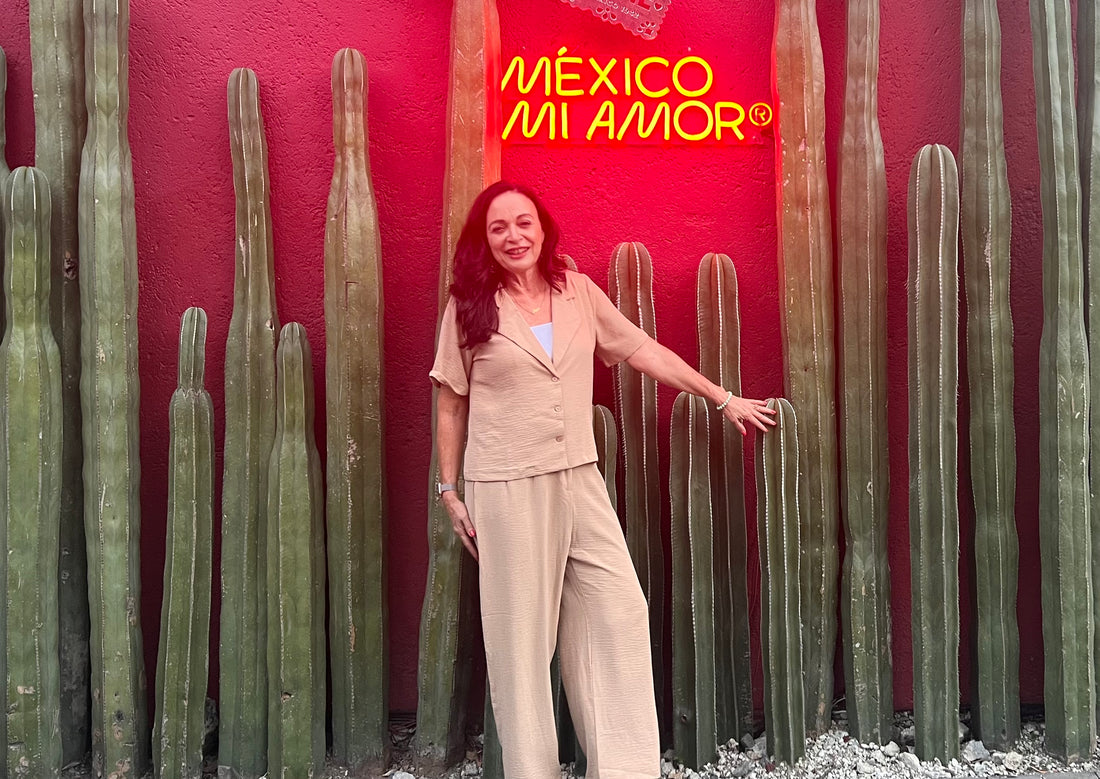
Though its capital Mexico City is one of the world’s best for culture and cuisine and the sprawl of Guadalajara represents some of the country’s richest arts and architectural offerings, Mexico’s true charm is best experienced within its small towns. Visit the golden town of Izamal, a tucked-away Maya fortress covered by a Spanish monastery and hidden within the Yucatán Peninsula’s dense jungle canopy. And then there's the diminutive mountain town of Tepoztlán, where the Central Valley’s vast history of Aztec mysticism comes alive. There are so many towns that prove a world of culture awaits in Mexico’s under-the-radar destinations. Wherever you go, natural wonders, intimate eateries, and boutique accommodations await—as do local guides in each destination who are there to show you how to explore their homes responsibly.
Sayulita
Though this once-sleepy fishing village is now quite well-known, Sayulita still offers a dose of friendly seaside charm along the shores of Riviera Nayarit. Though the region’s Pacific Coast is being developed by luxury resort brands, this town maintains its relaxed appeal and is often visited for its surf break—a friendly wave ideal for beginners. It’s also a popular area to take a stroll, thanks to its bevy of boutique cafés and shops like Manyana Sayulita, where visitors can shop handmade cotton and linen staples ethically produced by tailors at the brand’s nearby workshop. A short jaunt away is the newly-opened NICO, a micro-hospitality concept offering five boutique suites that can each be booked exclusively or together as a home for friends.
Izamal
Often overlooked in favor of nearby towns like Coba and Valladolid, Izamal—with its brilliant yellow architecture—is one of the Yucatán Peninsula’s most picturesque pueblos. Like its neighbors, Izamal was once a powerful Mayan city, believed to be as revered as the famed Chichen Itza. The golden St. Antony’s Monastery is at the town's center, built in 1561 atop Mayan ruins. While the town likely has hundreds of Mayan structures, one not-to-miss site is just a few blocks away from the Catholic structure: a pyramid dedicated to Kinich Kak Moo, the sun god of the Maya. Tucked behind one of the town’s unassuming façades is the oasis of Coqui Coqui Casa de Los Santos, an apothecary and perfumery offering one ethereal suite ideal for two, replete with a private terrace and plunge pool.
Pátzcuaro
Pátzcuaro is a lake town where the Indigenous Purépecha people make their home and celebrate centuries-old traditions, among them some of the finest Día de los Muertos festivities in the country. Its cobbled streets are lined with vestiges of Spanish-colonial influence like 16th- and 17th-century churches and mansions. Meanwhiles, behind unassuming façades are design shops and contemporary villas like Casa Lloreda. Nearby day trips include visiting Santa Clara del Cobre, where Mexico’s top coppersmiths craft handmade goods. For the adventurous set, take a hike up the majestic Parícutin, a dormant volcano that once erupted and created another not-to-miss spot: the lava-covered Church of San Juan Parangaricutiro.
Campeche
This picturesque port town in the Yucatán Peninsula feels like it might be the next Mérida. Within its fortressed downtown center—built to prevent the town’s storied history of pirate attacks—boutique stays like Refugio Bajo Las Hojas and hidden restaurants are tucked behind the colorful, pastel-hued façades of its cobbled streets. Stroll the town’s tranquil waterfront malecón, or visit the Museo Arqueológico de Campeche, which features some of the world’s best-preserved Mayan artifacts. Campeche is also the gateway to exploring ancient sites of the Maya, including Calakmul, a ruin that predates the more popular Chichen Itza ruins by about 1,000 years.
Bacalar
Bacalar's idyllic lagoon rivals nearby beaches on the Yucatán Peninsula, especially with its selection of boutique properties like the downtown Casa Hormiga and the lagoon-front Habitas Bacalar. Located about 30 minutes north of the city of Chetumal, Bacalar’s 26-mile lagoon is best known for its network of underwater stromatolites, which are limestone formations that are estimated to be about 3.5 billion years old—and that can die if they come in contact with human skin. This, among other reasons, is why Bacalar is best explored sustainably with a local guide, who can show travelers how to enjoy the lagoon without damaging it. Not-to-miss experiences include taking a sailboat ride through the lagoon or partaking in a sunrise paddle-boarding session to witness the sky’s rose and lavender hues mirrored on the lagoon’s languid, tranquil waters.
Tlaquepaque
Something like an arts colony, this vibrantly-hued town set about 30 minutes east of downtown Guadalajara is the ideal locale to browse handmade objects produced by the region’s finest craftspeople. While some art galleries and shops are unmarked and rather clandestine, others like Hacha, a design project started by ceramicist Santiago Padilla, are a little easier to find; they offer contemporary kitchenware staples. While in town, visitors can also learn more about the region’s art forms at two cultural centers: Museo Regional de la Cerámica and Museo Municipal Pantaleón Panduro del Premio Nacional de la Cerámica.
San Cristóbal de las Casas
Found among the waterfalls, lakes, and canyons of the Chiapas region, which is characterized by its Indigenous heritage, is the cobbled town of San Cristobal de las Casas—home to the boutique properties like Hotel Bo, a contemporary, 22-room design hotel with a tranquil courtyard pool. Alive with convivial markets, the downtown revolves around a central square home to one of the town’s most prominent sites: a pastel-hued, baroque-style cathedral with gold-leaf interior detailing and 18-century paintings by the late Oaxacan-born artist Miguel Cabrera. The town is also a gateway to exploring the ruins at Palenque and Yaxchilán, two ancient cities that belonged to the Maya civilization.
Todos Santos
All it takes is a 90-minute drive north of Los Cabos to reach this diminutive desert town, home to boutique properties like the brutalist Paradero and the oceanside respite Hotel San Cristobal. Todos Santos is conveniently positioned between the Pacific Ocean and the Sierra La Laguna mountain range, making it a delightful gateway to a diverse range of ecosystems, from tropical palm oases that rise before secluded stretches of beach, to miles of cactus-strewn desert that lead to towering ocean cliffs for hiking and mountain biking. But, by far, one of the most prominent reasons travelers venture here is for the surf: You don’t want to miss a sunrise session at Playa Cerritos, home to a barreling right-handed point break.
Tepoztlán
Two hours south of Mexico City is the mountain town of Tepoztlán. The area is believed to be the birth site of the Quetzalcóatl, the feathered-serpent god of the Aztecs believed to control the winds and rain, among other forces. There are plenty of boutique hotels in town, like the wellness-centric Casa Fernanda and the renovated Posada del Tepozteco, as well as beautifully designed sites like Dilao, a sculpture garden, and Margarita Concept, a greenhouse-inspired cocktail bar. Just outside of the downtown center is a steep hike to the Tepozteco ruins, a sky-high, clifftop ruin that was built as a dedication to the Aztec god, Tepoztēcatl, the deity of the viscous maguey-based drink, pulque.


